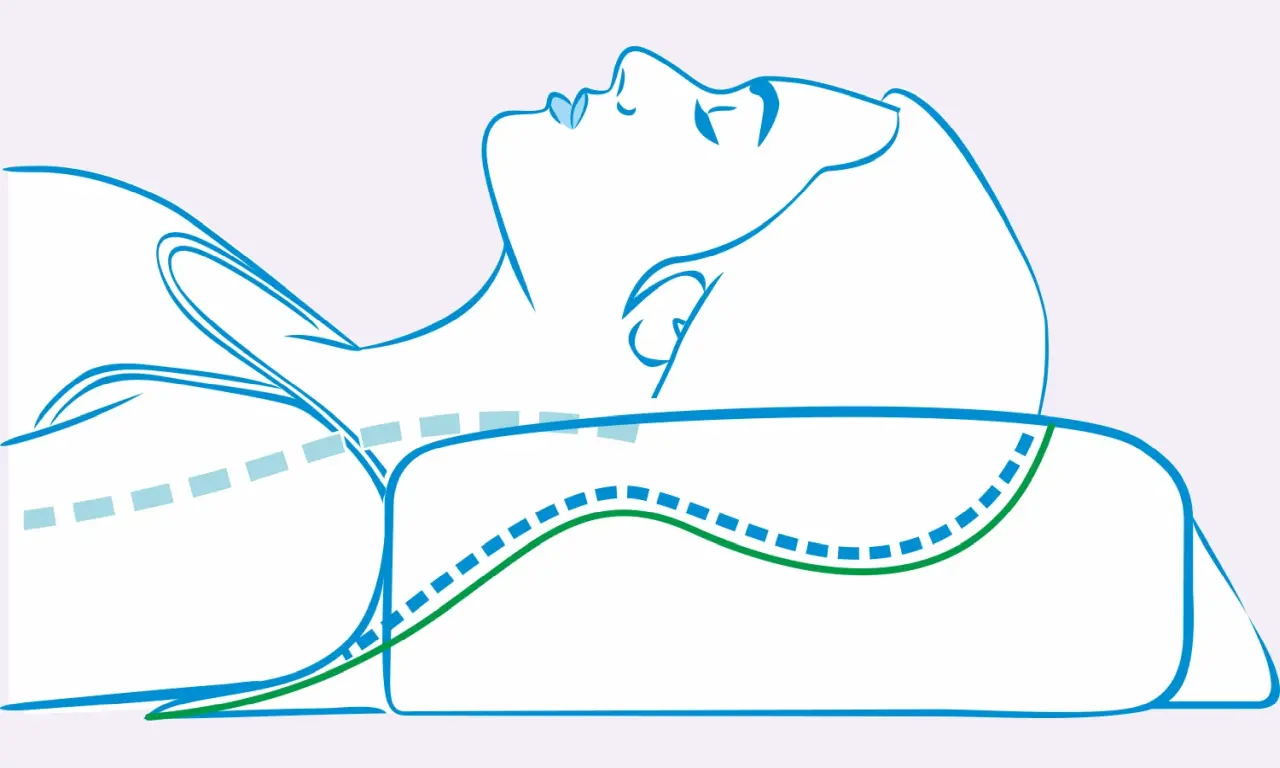To provide services at the highest level, we use cookies. Using the website requires you to choose settings related to their storage on your device. If you want to know what each type of cookie is used for, click the Details button below.
What do you need to know about sleeping on a pillow?10 lutego 2025 |

The majority of the human population changes their sleeping position between 10 and 40 times each night. This is a completely natural process that prevents excessive pressure on muscles and joints while also supporting proper circulation. As a result, it helps prevent limb numbness, although this also depends on various other factors. In general, the frequency of position changes depends on age, health condition, and the quality of the mattress and pillow, all of which are key aspects of sleep hygiene. That’s why choosing the right head and neck support is essential for ensuring healthy sleep.
Studies published by the Japanese Society of Sleep Research often emphasize the importance of proper body positioning. They prove that sleeping position affects spinal health and recovery quality. On the other hand, incorrect support during sleep can lead to long-term health issues, such as muscle tension, cervical spine pain, and shoulder discomfort, as well as restricted airflow in the respiratory tract. Therefore, people struggling with sleep apnea, snoring, or morning headaches should pay special attention to choosing the right pillow.
There is a strong correlation between sleeping position and cervical spine support. For example, back sleepers need a pillow of moderate height that gently lifts the head and supports the natural neck curve (lordosis). Meanwhile, most people, namely side sleepers, should opt for higher pillows to prevent the head from sinking, ensuring that the spine remains in a neutral position. Sleeping on the stomach is the least beneficial for health, as it forces the neck into an unnatural twist.
It is best to choose universal pillows for side and back sleeping, which allow for position changes during sleep without compromising comfort. These should be anatomically shaped pillows that conform to the body’s natural contours. Ideally, they should not contain memory foam, as they will be much more stable. Unlike memory foam pillows, which often sink under body heat, HR foam pillows help maintain proper head positioning.
The majority of the human population changes their sleeping position between 10 and 40 times each night. This is a completely natural process that prevents excessive pressure on muscles and joints while also supporting proper circulation. As a result, it helps prevent limb numbness, although this also depends on various other factors. In general, the frequency of position changes depends on age, health condition, and the quality of the mattress and pillow, all of which are key aspects of sleep hygiene. That’s why choosing the right head and neck support is essential for ensuring healthy sleep.
Studies published by the Japanese Society of Sleep Research often emphasize the importance of proper body positioning. They prove that sleeping position affects spinal health and recovery quality. On the other hand, incorrect support during sleep can lead to long-term health issues, such as muscle tension, cervical spine pain, and shoulder discomfort, as well as restricted airflow in the respiratory tract. Therefore, people struggling with sleep apnea, snoring, or morning headaches should pay special attention to choosing the right pillow.
There is a strong correlation between sleeping position and cervical spine support. For example, back sleepers need a pillow of moderate height that gently lifts the head and supports the natural neck curve (lordosis). Meanwhile, most people, namely side sleepers, should opt for higher pillows to prevent the head from sinking, ensuring that the spine remains in a neutral position. Sleeping on the stomach is the least beneficial for health, as it forces the neck into an unnatural twist.
It is best to choose universal pillows for side and back sleeping, which allow for position changes during sleep without compromising comfort. These should be anatomically shaped pillows that conform to the body’s natural contours. Ideally, they should not contain memory foam, as they will be much more stable. Unlike memory foam pillows, which often sink under body heat, HR foam pillows help maintain proper head positioning.
Sleeping on your back with the Hiro orthopedic pillow significantly improves sleep quality as well as spinal health. This sleeping pillow model is ideal for individuals with a larger build, made from high-resilience (HR) foams with high firmness, ensuring solid support.
Hiro is the largest anatomical pillow designed to provide proper head and neck positioning for back sleepers who are over 175 cm tall and weigh between 90 kg and 130 kg. It also guarantees keeping the spine in a natural position, which is crucial for individuals with higher body weight.
When using the Hiro pillow for back sleeping, the head should be placed in the central part of the pillow. The higher section of the ergonomic pillow should be positioned under the occipital bone, while the lower section should support the neck. This helps maintain a proper body posture and prevents discomfort in the cervical spine.